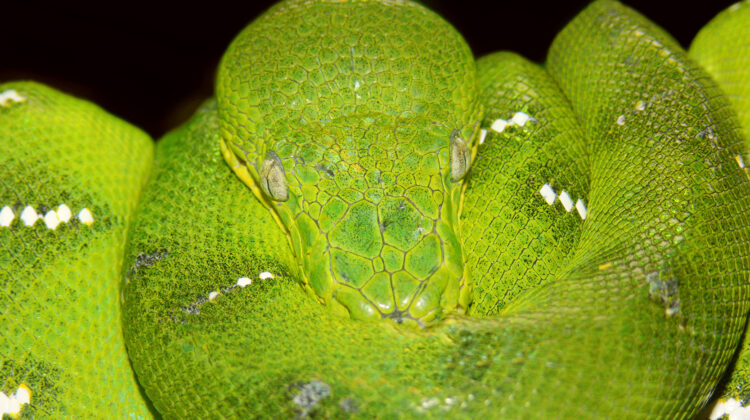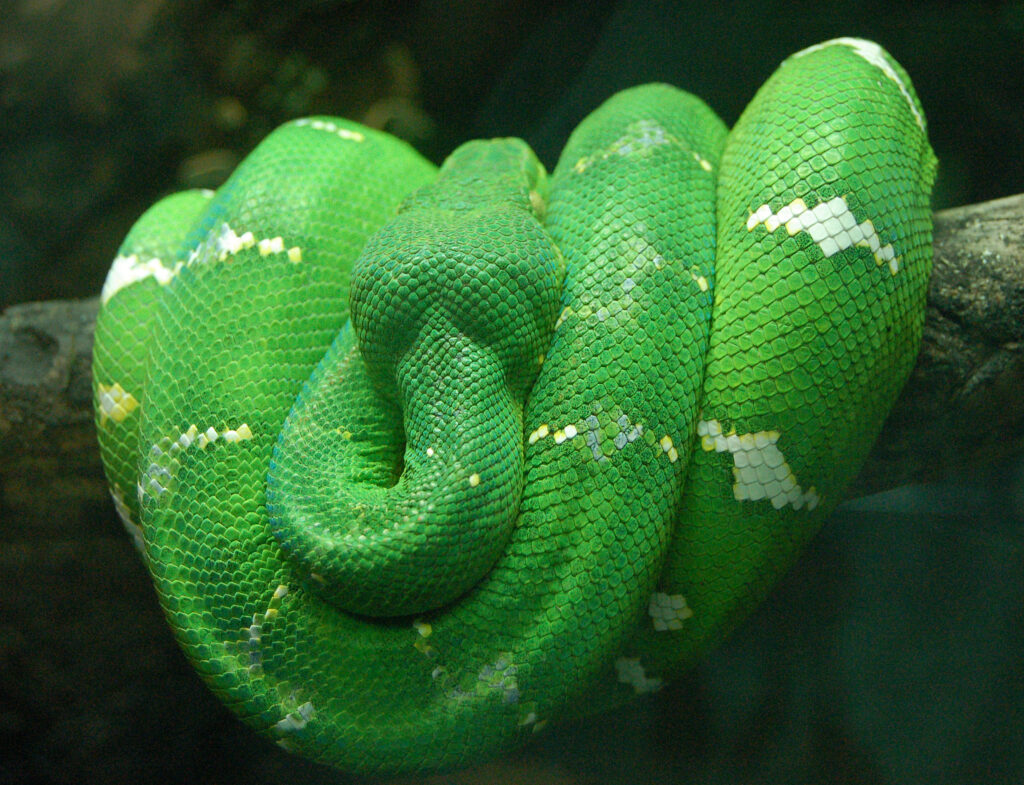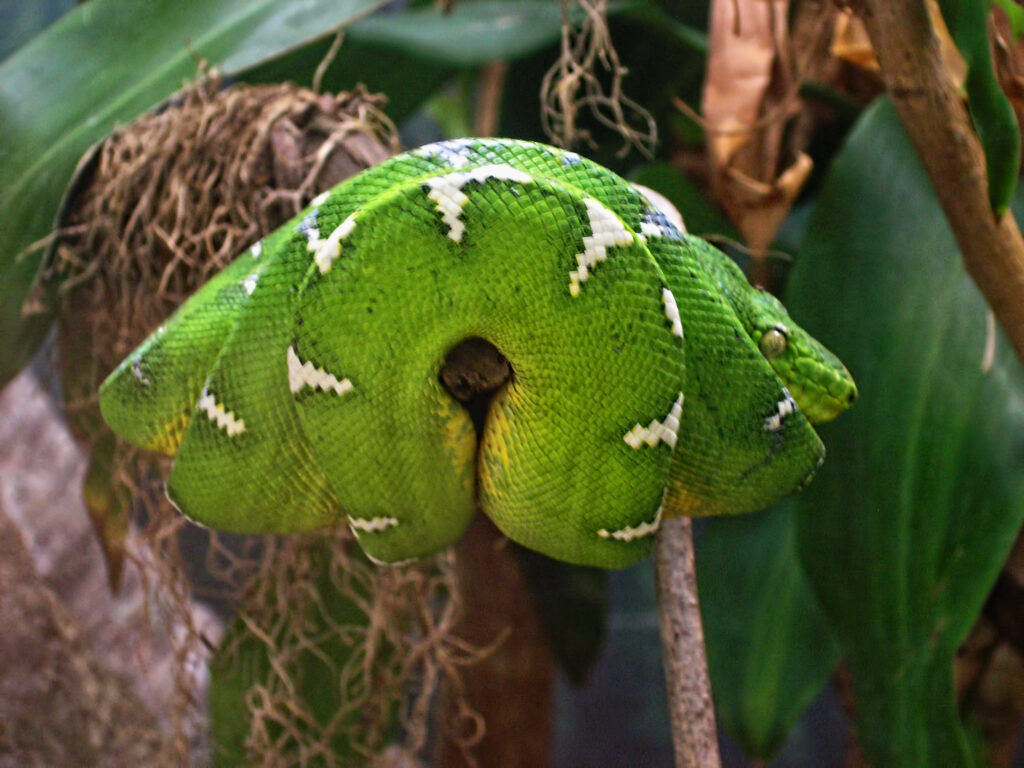
The emerald tree boa (Corallus caninus) is a striking and distinctive species of boa found in the rainforests of South America. In this article, we will discuss the physical characteristics, habitat, diet, and reproduction of this fascinating snake.
Description

Adult emerald tree boas typically reach a length of around 6 feet (1.8 m), with highly developed front teeth that are proportionately larger than those of any other non-venomous snake. Their coloration is very distinctive among South American snakes, with an emerald green ground color, interrupted by a white zigzag stripe or “lightning bolt” pattern down their back and a yellow belly. Juveniles vary in color, with shades of light and dark orange or brick-red before turning emerald green at around 9-12 months of age. The species Corallus batesii has been distinguished from the emerald tree boa since 2009, with herpetologists suggesting it be classified as a new species based on locality.

Geographic Range
Emerald tree boas are found in South America in the northern region of Colombia, Brazil, and from Venezuela to Suriname and the Guianas within the so-called Guiana Shield. The ‘Basin’ species is only found along the basin of the Amazon River, in southern Suriname, southern Guiana, southern Venezuela to Colombia, Peru and Brazil and in the surrounding jungles of the Amazon River.
Diet
The emerald tree boa’s diet consists primarily of small mammals, although they have been known to eat some smaller bird species, lizards, and frogs. Due to their slow metabolism, they feed much less often than ground-dwelling species, with meals sometimes several months apart. Contrary to popular belief, studies have shown that the primary diet of the species consists of small mammals such as rodents and marsupials.
Reproduction
Emerald tree boas are ovoviviparous, with females producing an average of between 6 and 14 young at a time, sometimes even more. Litters exceeding these numbers are extremely rare. Newly born juveniles have a distinctive brick-red to orange coloration and gradually go through an ontogenetic color change over a period of 12 months, gradually turning to full emerald green.
Physical Differences
The emerald tree boa appears very similar to the southern green tree python (Morelia viridis) from southeast Asia and Australia. This is an example of convergent evolution: the species are only very distantly related. Physical differences include the head scalation and the location of the heat pits around the mouth.
In conclusion, the emerald tree boa is a unique and beautiful species of snake found in the rainforests of South America. With its striking coloration and distinctive markings, it is easily recognizable among South American snakes. As an arboreal species, it spends most of its time in trees, preying on small mammals, birds, lizards, and frogs. Overall, the emerald tree boa is a fascinating species that adds to the diversity and complexity of the world’s rainforest ecosystems.
References
- Oubotar, P.; Schargel, W.; Rivas, G. (2016). “Corallus caninus”. IUCN Red List of Threatened Species. 2016: e.T203208A2762180. doi:10.2305/IUCN.UK.2016-3.RLTS.T203208A2762180.en.
- McDiarmid RW, Campbell JA, Touré T. 1999. Snake Species of the World: A Taxonomic and Geographic Reference, Volume 1

Leave a Reply